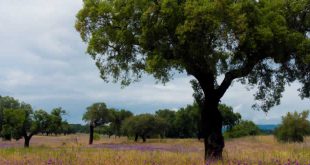Cowpea — The Cowpea (Vigna unguiculata) is one of several species of the widely cultivated genus Vigna. Cowpeas are one of the most important food legume crops in the semi-arid tropics covering Asia, Africa, southern Europe and Central and South America. A drought tolerant and warm weather crop, cowpeas are well-adapted to the drier regions of the tropics, where other …
Read More »Cottonwood
Cottonwood — The cottonwoods are three species of poplars in the section Aegiros of the genus Populus, native to North America, Europe and western Asia. The name is also commonly used for any species of poplar in the United States, including some poplars not in the section Aegiros, notably the Swamp cottonwood Populus heterophylla (in the section Leucoides) and the …
Read More »Cosmos
Cosmos — Cosmos is a genus of about 20-26 species of annual and perennial plants in the family Asteraceae, native to scrub and meadow areas in Mexico (where the bulk of the species occur), the southern United States (Arizona, Florida), Central America and northern South America south to Paraguay. A cosmos flower is said to represent the ‘heart of a …
Read More »Corn
Corn — Maize, usually called corn in some countries, is a cereal grain that was domesticated in Mesoamerica and then spread throughout the American continents. Maize spread to the rest of the world after European contact with the Americas in the late 15th century and early 16th century. The term maize derives from the Spanish form (maíz) of the indigenous …
Read More »Cork Tree
Cork Tree — Phellodendron or Cork-tree, is a genus of deciduous trees in the family Rutaceae, native to east and northeast Asia. It has leathery, pinnate leaves and yellow, clumped flowers. The name refers to the thick and corky bark of some (but not all) species in the genus. As an ornamental plant, Phellodendron is a tree for all seasons. …
Read More »Cork Oak Tree Encyclopedia
Kingdom: Plantae Family: Fagaceae Order: Fagales Genus: Quercus Cork Oak Tree — The Cork Oak (Quercus suber) is a medium-sized, evergreen oak tree in the section Quercus sect. Cerris. It is native to southwest Europe and northwest Africa. It grows to up to 20 m, although it is typically more stunted in its native environment. The leaves are 4-7 cm …
Read More »Coriander
Coriander — Coriander, Coriandrum sativum, also commonly called cilantro, is an annual herb in the family Apiaceae. Coriander is native to southwestern Asia and west to north Africa. It is a soft, hairless plant growing to 50 cm [20 in.] tall. The leaves are variable in shape, broadly lobed at the base of the plant, and slender and feathery higher …
Read More »Coneflower
Coneflower — Rudbeckia is one of at least four genera within the flowering plant family Asteraceae whose members are commonly known as coneflowers; the others are Echinacea, Dracopis and Ratibida. They are herbaceous, mostly perennial plants (some annual or biennial) growing to 0.5-3 m tall, with simple or branched stems. The leaves are spirally arranged, entire to deeply lobed, 5-25 …
Read More »Columbine
Columbine — Aquilegia (columbine) is a genus of about 60-70 species of herbaceous perennial plants that are found in meadows, woodlands, and at higher altitudes throughout the Northern Hemisphere. They are known for their distinctive flowers, generally bell-shaped, with each petal modified into an elongated nectar spur. Its fruit takes the form of a follicle. Several species are grown in …
Read More »Collard
Collard — Collards, also called borekale (from the Dutch boerenkool (farmerskale), Brassica oleracea Acephala Group), are various loose-leafed cultivars of the cabbage plant. The plant is grown for its large, dark-colored, edible leaves and as a garden ornamental, mainly in Brazil, Portugal, the Southern United States, many parts of Africa, Montenegro, Spain and in Kashmir as well. They are classified …
Read More » Kids Portal For Parents India Kids Network
Kids Portal For Parents India Kids Network
